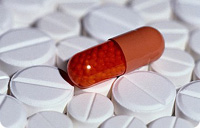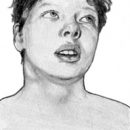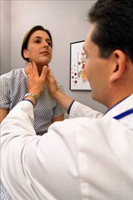What is sepsis? What are the symptoms of sepsis? How to diagnose sepsis? How to treat sepsis? Answers to these questions you will find in the article.
Content
Sepsis
Sepsis - system inflammatory response of the body for infection by any microorganisms. Septic shock occurs as a result of an excessive reaction of the organism's homoeostatic mechanisms for an infection leading to arterial hypotension and polyorganic failure.
In the United States there are 300,000-500,000 cases of sepsis per year, which entails more than 100,000 fatal outcomes. Approximately 2/3 of them occur in hospitals. In 30-60% of patients with sepsis and in 60-80% of patients with septic shock, the growth of the culture of the pathogen from the blood is revealed. 75% of them discovered gram-negative bacteria, 10-20% - gram-positive coils and 2-5% - mushrooms. Gram-negative Bacteriamia Risk factors include diabetes mellitus, lymphoproliferative diseases, liver cirrhosis, burns, invasive procedures and neutropenia. Risk factors of gram-positive bacteremia: intraososu-dypsum catheters or mechanical procedures, burns and intravenous drug administration. The incidence of sepsis is constantly growing, perhaps as a result of an increase in risk factors in the population.
Sepsis symptoms
Sepsis symptoms include a sudden occurrence of fever, chills and tachycardia, tachipne, disruption of consciousness or hypotension, in particular, in a patient with focal infection. At the same time, the septic reaction may develop gradually and many of the mentioned symptoms may be absent. Hyperventilation, disorientation and violation of consciousness often - early signs. Arterial hypotension and DVS syndrome may develop. Frections Skin manifestations: cyanosis, ischemic necrosis of peripheral tissues, cellulite, pustules, bulls, hemorrhagic lesions. With a number of skin symptoms, a specific pathogenesis can be suspected: Petechia or Purples for meningococcalum or a fever of rocky mountains; Bully, surrounded by edema with hemorrhage and necrosis in the center (gangrenous ectims) during sepsis caused by pseudomonas; generalized erythrodermia in a patient with sepsis - toxic shock syndrome; Bullous lesion after eating raw oysters during sepsis VIBRIO VULNIFICUS; The same after the bite of a dog - when sepsis Capnocytophaga. CO The sides of the gastrointestinal tract are nausea, vomiting, diarrhea, obstruction, ulceration of the stomach with bleeding and cholestatic jaundice.
Diagnosis of sepsis
There are no reliable laboratory tests that allow you to establish a diagnosis of sepsis in the early stages. Clinical signs can be expressed in varying degrees, they are nonspecific. Laboratory data is significant leukocytosis with a shift to the left, thrombocytopenia, proteinuria, maybe leukopenia. Pronounced hemolysis is observed in clostridial bacteremia, malaria or DVS syndro. With it in the peripheral blood smear, fragmented red blood cells are visible. Respiratory alkalosis caused by hyperventilation can be changed with metabolic acidosis and hypoxhemia. During chest radiography, respiratory distress syndrome of adults or pneumonia is detected. To verify the diagnosis, the pathogens from the blood or focus of infection should be distinguished. At least two positive sowing microflora from the blood should be obtained (blood takes from 2 different veins). With negative sowing results (in 30%), the diagnosis is based on the study of material from the primary focus of infection or from secondary infected tissues (painting by gram and sowing). Under explicit bacteremia, microorganisms can be detected in labels from leukocytes in centrifuged peripheral blood.
Treatment of sepsis
Sepsis - an emergency clinical problem that requires emergency action to suppress local infection, treatment aimed at maintaining blood circulation systems, respiration and elimination of an infectious pathogen. Antibacterial treatment starts as soon as blood and tissue samples will be ready for culture. Empirical treatment is based on clinical information about the patient, as well as the microbial flora of the area and the hospital, where the patient is. In anticipation of the results of sowing gemoculture, treatment is carried out against gram-positive and gram-negative bacteria. Cefotaxim (3 g of intravenously after 6 h) or ceftazidim (2 g of intravenously after 8 h) + gentamicin or Tobramycin (1.5 mg / kg intravenously after 8 hours) are administered if the focus of the primary infection is not detected.

Nafzillin should be added (3 g intravenously after 6 h) or vancomycin (15 mg / kg intravenously after 12 hours), if the patient receives intravenous injections, a permanent vascular catheter is installed or there are foci of infection on the skin. In case of suspicion of the focus of infection in the abdominal cavity, it is necessary to prescribe a metronidazole (500 mg intravenously after 6 h) or clindamycin (600 mg intravenously after 6 h). It is necessary to remove purulent material from tissues or drain the local focus of infection (permanent intravenous or blade catheter, topless sinuses, abdominal cavity, paranefral space, small pelvis).
Treatment of hemodynamic disorders normalizes the supply of tissues by oxygen. For the restoration of effective BCC introduced intravenously 1-2 l of the normal salt solution for 1-2 hours. In patients with refractory shock, as well as with accompanying lesions of the heart or kidney, it is important to monitor ZLL. To restore the average hell before > 60 mm RT. Art. or systolic hell before > 90 mm RT. Art. Apply dopamine in a dose of 5-10 μg / (kg x min). Higher doses cause peripheral vazospasm with ischemia. In the absence of a favorable reaction to dopamine, norepinephrine with cautious dose titration (average dose of 2-4 μg / min) to support the average hell > 60 mm RT. Art.
A combination of dopamine is possible in a low dose of 1-4 μg / (kg x min) with norepinengine - this is the maximum allowable vesseloring therapy - to preserve blood circulation in the kidneys. With progressive hypoxemia, hyperkapinia, neurological disorders or intoleration of respiratory muscles need IVL. The use of glucocorticoids (hydrocortisone 50 mg intravenously after 6 h) is shown only in rare cases of adrenal insufficiency, which can be suspected during refractory arterial hypotension, NEISSERIA MENINGITIDIS lightning bacteriamia, disseminated tuberculosis. Despite the early diagnosis and energetic treatment, about 25% of patients die from Sepsis.
The forecast depends on the clinical situation, the rate of development of complications and to a lesser extent - on the type of infection. Preventive measures - the best means of reducing the likelihood of sepsis and fatal outcome. These include: it is possible to more rare the use of invasive procedures, a decrease in the number and duration of the use of constant vascular and urinary catheters, a reduction in the duration of pronounced neutropenia, at the same time - energetic elimination of local infection and immunization against specific pathogens.









